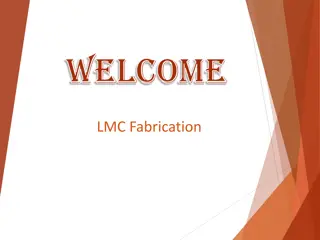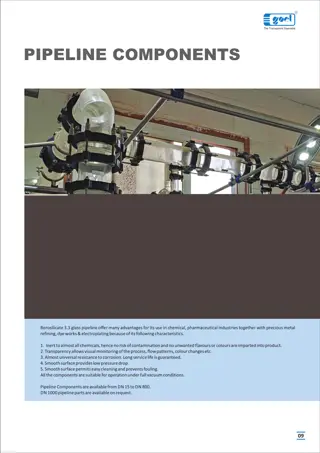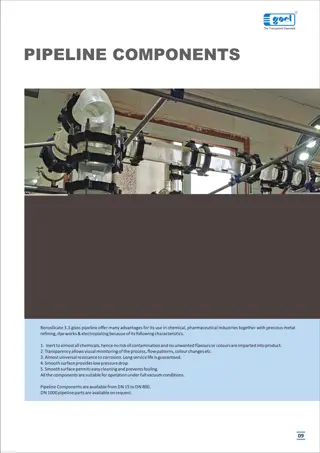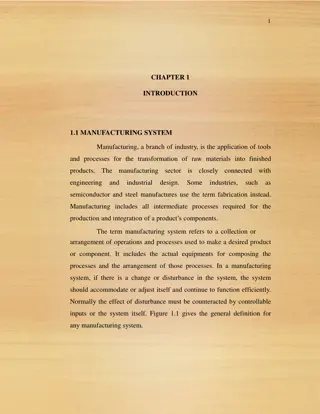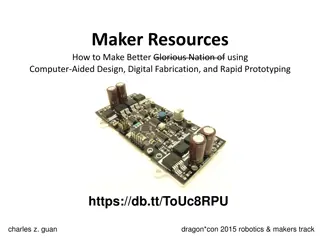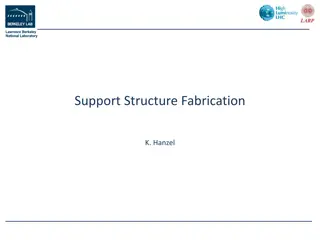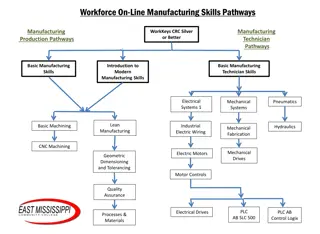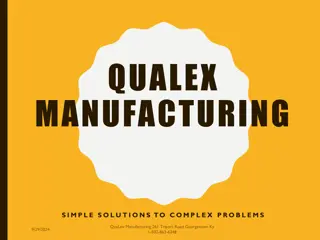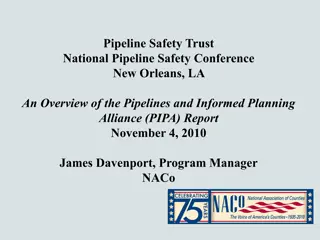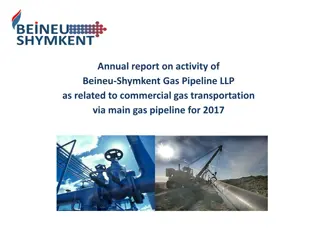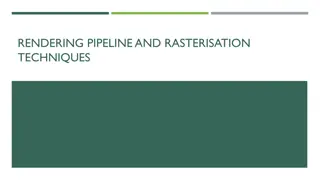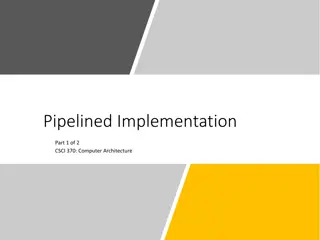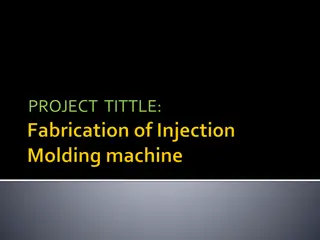Pipeline Fabrication and Manufacturing Techniques
Pipeline fabrication involves the creation of pipelines for conveying fluids like liquids and gases. This process includes different stages such as pipe fabrication, pipeline accessories, and calibration. Various methods such as press plate bending and spiral pipe forming are utilized in the fabrication of welded pipes. The manufacturing process also includes phases like mechanized fabrication lines for welded pipelines. Different techniques are employed for pipe halves positioning and spiral pipe forming, ensuring efficient fabrication and construction of pipelines.
Download Presentation

Please find below an Image/Link to download the presentation.
The content on the website is provided AS IS for your information and personal use only. It may not be sold, licensed, or shared on other websites without obtaining consent from the author.If you encounter any issues during the download, it is possible that the publisher has removed the file from their server.
You are allowed to download the files provided on this website for personal or commercial use, subject to the condition that they are used lawfully. All files are the property of their respective owners.
The content on the website is provided AS IS for your information and personal use only. It may not be sold, licensed, or shared on other websites without obtaining consent from the author.
E N D
Presentation Transcript
Projektovanje tehnologije zavarivanja
Pipeline fabrication Pipelines is used for coveyance of fluids (liquids and gases). Two types of pipelines exist: magistral pipelines and pipelines inside industrial facilities.
Pipeline manufacturing comprises of: 1. Pipe fabrication 2. Pipeline accessories 3. Pipeline continuation
Pipe fabrication Welded pipes (non-seamless) are fabricated by: 1. Press plate bending 2. Spiral pipe forming
Press plate bending: 1. With one weld seam 2. With two weld seams
1. With one weld seam The process of plate bending with one weld seam on a press: a) Rolling-bending of plate edges b) Bending of the plate central section c) Finishing with upper mold 1 - plate
Phases: Mechanised fabrication line for welded pipelines with rollers: 1 - plate
2. With two weld seams: The process of plate bending with two weld seams: 1-plate
Phases: Mechanised fabrication line for welded pipelines with rollers and the press: 1 - plate
* Pipe calibration: Calibration and hydraulic testing of the welded pipe: 1-pipe 2-calibrating piston
** Pipe halves positioning: Pipe halves positioning : a) pipe halves positioning in half-frames b) Positioning of half-frames c) side view 1 pipe-half; 2 half-frame; 3 frame arm; 4 frame rotation axis
Spiral pipe forming: - It is used for large diameter pipelines. - Different pipe diameters can be obtained from the same plate width. - =(40 66)o - B/D=2.35-1.25 Spiral pipe forming 1-bending device
Phases: Mechanised fabrication line for spiral pipe forming: a-mechanized line, b-spiral forming, c-weld cross section, 1 rolled sheet, 2-sheet compensating hang, 3-welded pipeline, 4-bending device
Pipeline accessories Rebra krutosti Pipeline supports Compensators
Stiffening ribs: - Stiffening ribs are used for pipelines with diameters of over 1.5 m Pipeline stiffening ribs
Pipeline supports used also for compensating heat dilatations Roller pipeline support (diameter over 1,5 m) Slide pipeline support: a) diameter of 0,6-1,5 m, b) diameter up to 0,6 m
Compensators head dilatation dilatation compansation
Pipeline continuation Two pipe sections continuation by welding
Small diameter pipeline continuation (a), diameter reduction (b), flanges (c,d), branch (e) and bends (f,g,h). Large pipeline bend.
Pipeline welding to a pressure vessel or a plate: Pipeline welding to a pressure vessel or a plate, fabrication steps: a-drilling, b-pressing (punching), c-welding
Branch and diameter reduction element fabrication: Branch and diameter reduction element fabrication


